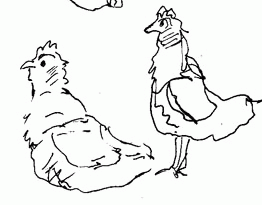A recent study in the journal Environmental Health Perspectives found detectable levels of arsenic in chicken from
grocery stores in 10 American cities, including in organic chickens. If the
drug were fed to all chickens, over 100 US deaths would result from
arsenic-related lung and bladder cancers, report the authors.
The National Chicken Council, which represents the firms
that produce 95 percent of US meat chickens, dismissed the study as reflecting "very
low levels of arsenic," reported the New York Times.
This is not the first time arsenic levels in poultry have
made the news. In 2011 Pï � �zer announced it would stop selling arsenic-treated
chicken feed after the FDA found inorganic arsenic, a carcinogen, "at
higher levels in the livers of chickens treated than in untreated
chickens." Other poultry feed with arsenic remained on the market.
The FDA has approved arsenic in poultry feed for years to
control parasites in birds, promote weight gain and feed efficiency and improve
"pigmentation." Like artificial dye in farmed salmon and gasses used
to keep grocery store beef red, the FDA apparently puts public health risks
below helping industry move its products.
In 2006 in the same journal, Environmental Health Perspectives Dr. Ellen Silbergeld raised questions about arsenic levels in poultry including "additional exposures to arsenic from confined animal feeding operation (CAFO) wastes via land disposal, which may reach human populations though soil." Such runoff from megafarms is now indicted for high levels of arsenic found in US rice. A Consumer Reports investigation last year found concerning arsenic levels in the food supply and recommended federal action.
At the time of the article, Dr. Silbergeld was assailed by Big Ag for raising the alarm about arsenic levels in poultry as having a "political agenda" but reports since 2011 suggest she was right.
The levels of arsenic reported this spring in Environmental Health Perspectives are below federal limits and were also obtained before Pfizer withdrew its widely used feed product in 2011. But the researchers point out that the danger levels of arsenic for humans were established in the 1940's and another arsenic laced product remains on the US market. Nor is the National Chicken Council a reassuring voice.
(Note: You can view every article as one long page if you sign up as an Advocate Member, or higher).






